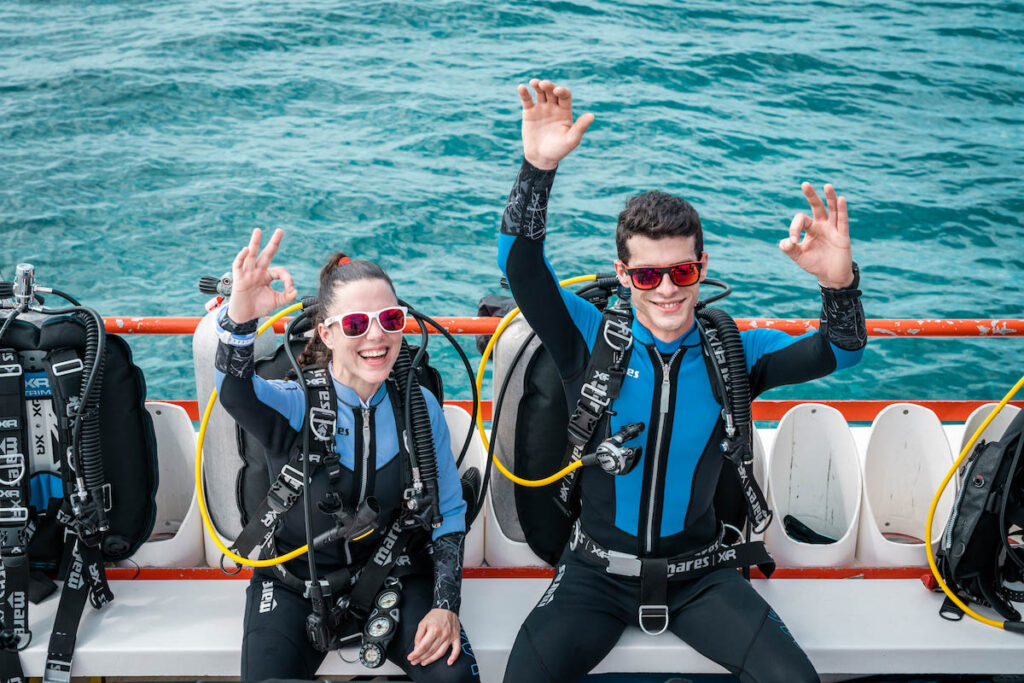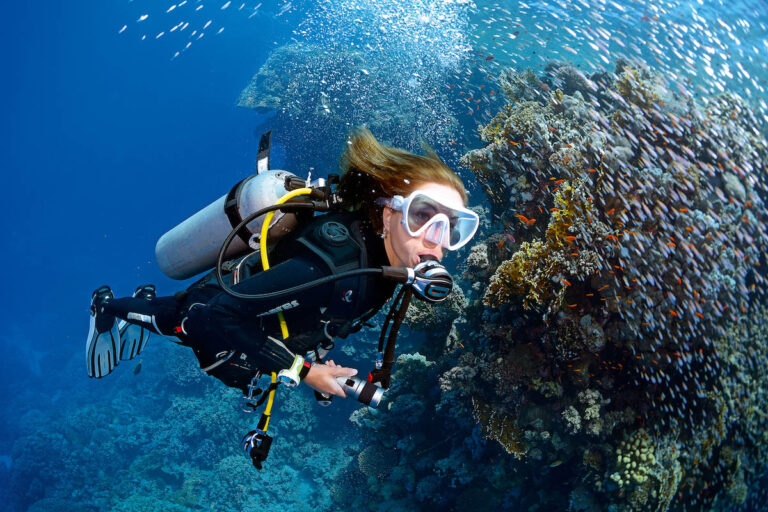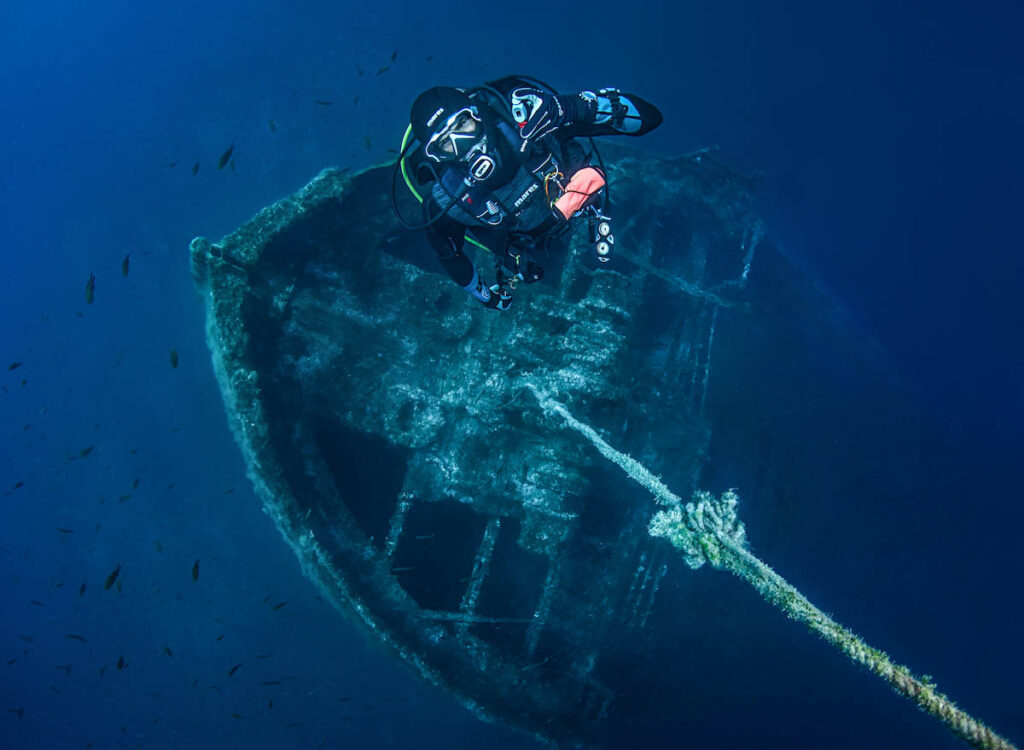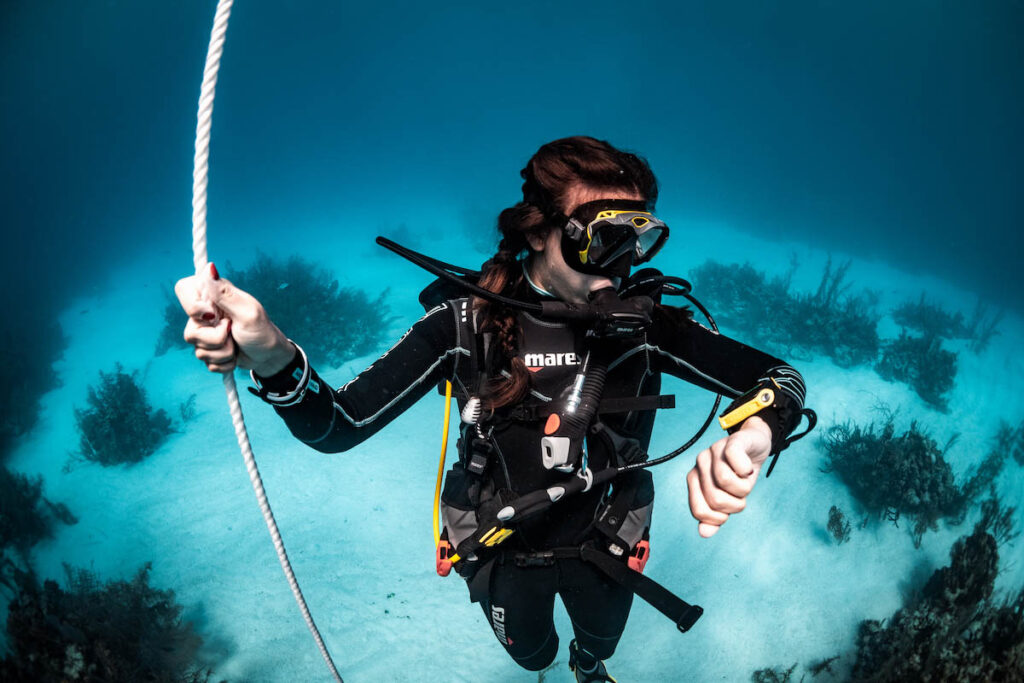Scuba diving is great fun, but like any adventure sport, it has some risks. Whether you’re new to diving or an experienced diver, it’s important to prioritize your safety at every stage of your dive. However, it can be easy to forget something when you just want to get in the water and explore. So, in this article, we’ll explore some essential health and safety tips for divers, covering what to do before, during, and after a dive.
1. Check you are fit to dive
Before you go on a dive trip, make sure you’re physically fit to dive. Diving works your cardiovascular system, lungs, and muscles, so it’s important to be fit. It’s also a good idea to have a medical checkup to identify any potential health issues, such as heart conditions, respiratory issues, or ear problems that could interfere with diving. Divers with underlying health conditions should always consult a physician who understands dive medicine.
2. Maintain your dive gear
One of the most important aspects of dive safety is ensuring your equipment is in perfect working order. Regularly inspect and service your gear, including your mask, fins, regulator, and buoyancy control device (BCD). Make sure to check your tanks for proper pressure and your dive computer for functionality. Also, familiarize yourself with how to handle equipment issues while underwater.
If you want to learn more about dive gear maintenance, consider joining an Equipment Techniques dive specialty. You will learn how to maintain, troubleshoot, and repair your gear, minimizing the risk of equipment-related incidents during a dive.
3. Get a good dive buddy
Having a good dive buddy – and being a great dive buddy yourself – are vital for dive safety. Diving with a buddy provides a backup in case something goes wrong, whether it’s equipment malfunction, navigation issues, or a medical emergency.
Before each dive, talk to your buddy – go over emergency procedures with them, check you both use the same hand signals, and plan your dive profile together. Ask if they have any concerns about the dive and if there’s anything you can do to help them. Always stay close together during your dive; make sure you can reach each other within 2 seconds.
4. Check the weather and dive conditions
Before scuba diving, always review the weather and water conditions. This is especially important if you are doing an unguided dive or are diving in an area you don’t know. Strong currents, rough seas, and poor visibility can create dangerous situations. If the conditions aren’t favorable, postpone the dive. Safety always comes first, and there’s no shame in canceling a dive if necessary.
5. Plan your dive properly
Proper dive planning ensures you and your buddy know what to expect during the dive. A good dive plan should include the maximum depth, dive time, expected currents, and navigation route. Stick to your plan, especially when it comes to depth limits and dive time.
When planning your dive, consider who is going to lead the dive and that your dive aims are compatible. Is one of you a photographer? Check if you’re both happy for one of you to be doing photography on the dive. Having a photographer in a buddy pair often results in buddy separation as one diver is busy focussing on their photography subject while the other diver swims ahead to keep up with the dive group.
If you’re doing an unguided dive, also consider your surface support and what your surface support person’s role will be. Check they know the emergency procedures and that they have everything they need.
6. Know your limits and when to say no
You should always stay within your personal and certification limits. If you’re not trained for deep diving, wreck diving, or cave diving, avoid those environments until you receive proper training. Overextending your skills can lead to dangerous situations such as nitrogen narcosis, decompression sickness, or getting lost in an overhead environment.
Also, don’t be afraid to skip a dive or end a dive early if you have any concerns about the dive. It is better to be safe than sorry.

7. Stay hydrated
Diving is a physically demanding activity, and dehydration can increase your risk of decompression sickness. Drink plenty of water before and after your dive, and avoid alcohol, tea, and coffee, as they can cause dehydration.
8. Maintain your fitness
Keep fit to ensure you can handle the physical demands of swimming, especially in challenging currents or rough conditions. A mixture of aerobic exercise and strength training will keep you fit for diving.
9. Use the correct weights
Carrying too much or too little weight can affect your buoyancy control. Always conduct a weight check at the surface before starting your dive to ensure you’re properly weighted for the conditions, your wetsuit thickness, and your equipment.
10. Protect yourself from marine life
While marine life is generally non-aggressive, it’s important to avoid touching or disturbing creatures like jellyfish, stingrays, or coral, which can cause injury. Respect the environment, maintain a safe distance, and don’t provoke wildlife for your safety and theirs. Also, make sure you wear a wetsuit or dive skin to protect yourself from stings.
11. Equalize early and often
Ear barotrauma, or damage caused by pressure, is a common issue during dives, particularly during descent. Equalizing your ears early and often as you descend will help to prevent injury. If you feel any discomfort or pain, stop descending and ascend slightly until you can equalize properly. Never force equalization, as this can cause ear or sinus injuries. If you still can’t equalize properly after ascending slightly, end your dive. It’s not worth the risk.
12. Monitor your air supply
Always keep an eye on your air gauge and communicate with your buddy when you reach specific levels of air consumption. Never push your air limits, and always surface with 50 bar (750 psi) of air.
13. Stay calm and avoid overexertion
Remaining calm underwater is vital when managing unexpected situations. Panic can lead to poor decision-making and rapid breathing, which wastes air. Practice slow, deep breaths to maintain control, and if you feel stressed, signal your buddy and slowly ascend to safety.
Also, make sure you avoid overexertion during your dive. Overexertion can occur when finning against strong currents and results in you needing more air than your tank can supply. Feeling like you can’t get enough air fast enough can lead to panic. If you feel overexerted, signal your buddy and take a break to return to your normal breathing and heart rate.
14. Control your ascent rate
One of the most critical safety tips is to ascend slowly. Ascending too quickly can lead to decompression sickness, also known as “the bends.” A safe ascent rate is no more than 18 meters per minute when ascending from more than 18 meters (60 feet) of depth. Most dive computers provide feedback on your ascent rate to help you manage it properly. Additionally, always perform a safety stop at 5 meters (15 feet) for 3 to 5 minutes before surfacing.
15. Rest and recover between dives
Surface intervals between dives allow your body to off-gas excess nitrogen absorbed during the dive. Failure to allow adequate surface intervals can increase your risk of decompression sickness. After deeper or more strenuous dives, extend your surface interval to ensure a safe return to the water. Be sure to stay hydrated and avoid alcohol or heavy meals between dives.
16. Become a Rescue Diver
Finally, if you want to enhance your dive safety skills, become a Rescue Diver. This is one of the most rewarding dive courses and teaches you how to manage underwater emergencies. You’ll learn how to recognize signs of stress, provide emergency assistance, and improve your confidence in handling challenging situations. If you want to be a better diver and help other divers, completing your Rescue Diver course is a must.








